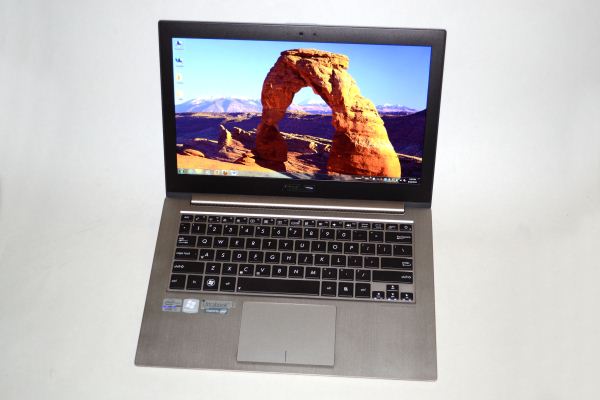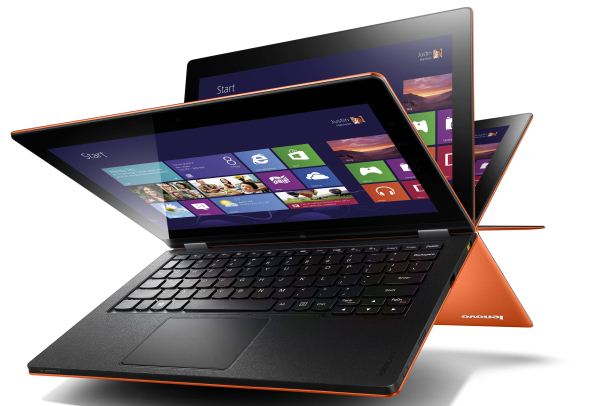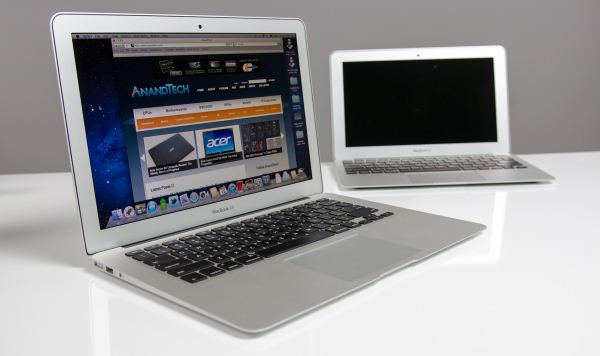Holiday 2012 Ultrabook and Ultraportable Guide
by Jarred Walton on December 12, 2012 4:00 AM ESTGaming and Midrange Ultrabooks/Ultraportables
Our next step up is the $1000, give or take, which is now firmly into the realm of quality Ultrabooks. I’m going to be a bit of a pill and take a hard stance on size: the screen needs to be between 12.1” and 14”, and weight needs to be under five pounds and (preferably under four pounds); anything smaller or larger isn’t going to be considered. It’s a personal judgment call, so if you disagree you’re welcome to do so in the comments, but I’m trying to pare down the list of candidates to a manageable number.
A Budget Gaming Ultrabook
I initially thought I’d have this on the previous page, as it qualifies based on price, but the fact is when I got through looking at the midrange (around $1000) ultraportables, there wasn’t a lot out there that I really like. Most of the products are basically the higher-spec versions of the midrange stuff we just looked at, so you’re getting Core i5 or possibly Core i7 with 120GB/128GB SSDs. That’s a pretty steep upsell when the cost of the SSD should be under $100 these days. So, I decided to put the budget gaming Ultrabook on this page.
You might wonder how it’s possible to even get “budget”, “gaming”, and “ultrabook” into a single product, but the fact is that there’s exactly one laptop out there that qualifies: the Acer TimelineU M5. It’s not going to win awards for screen quality, but I’ve had one for review (that sort of got pushed to the back burner) and I actually like what Acer has done. Priced at $750 even, the TimelineU M5-481TG-6814 gives you and i5-3317U processor with a 500GB HDD and 20GB SSD (with the SSD being solely for the purpose of fast resume). You also get an optical drive, and to turn all of this into a viable gaming Ultrabook Acer ships it with the GeForce GT 640M LE GDDR5.
The CPU is sufficient for moderate gaming, but the GT 640M LE is actually surprisingly potent, especially when running at the laptop’s native 1366x768. Battery life is also quite good, and while we’re dealing with a 14” Ultrabook the weight is still manageable at 4.3 pounds. Anyone that suggests that AMD’s Trinity is the best mobile gaming solution on a budget needs to take a long look at the M5, as the GT 640M LE beats even the A10-4600M iGPU in gaming potential and the price is similar if not lower. I even like the keyboard layout for the most part, and if you’re not interested in jumping on the Windows 8 bandwagon the M5 still ships with Windows 7.
Best All-Around Midrange Ultrabook
We’re dealing with opinions, naturally, but the best Ultrabook I’ve tested so far is and continues to be the ASUS UX31A. The keyboard feels good, the build quality is excellent, and the display…oh, the display! There are quite a few other Ultrabooks now shipping with 1080p displays, but guess what? Most of them are glossy touchscreens, and they’re all priced higher than $1100 (which is my cutoff point for “Midrange Ultrabook/Ultraportable”). The UX31A-DB51 earned a Bronze Editor’s Choice award back when we reviewed it, and it still holds up well nearly four months later.
The UX31A is now shipping with Windows 8, which may actually be a downgrade in the opinion of some people, but my experience is that all you need to do is install ClassicShell or Start8 and you should be fine. The biggest complaint I have with the UX31A is that it appears ASUS pulled a fast one and started shipping SanDisk U100 SSDs instead of the ADATA SF-2281 SSD we tested; storage performance will be slower, but unless you’re really pounding the SSD it’s not likely to be a huge problem. You can get the UX31A-DB51 with an i5-3317U, 4GB RAM, and 128GB SSD starting at $1030.
Windows 8 Needs a Touchscreen!
With Windows 8 we now have an incentive for including touchscreens on laptops. That means glossy LCDs (matte doesn’t play well with fingerprints!), but more importantly it means we’re actually seeing more IPS panels. If you’re looking for something designed with Windows 8’s touch UI in mind, the least expensive way to get there without making other sacrifices is the Lenovo Yoga 13, tipping the scales at $999 (with the current $100 “YOGADEAL” discount) and shipping with a 1600x900 LCD, 4GB RAM, 128GB SSD, and an i3-3217U processor. The next step up is at our $1100 limit, but it will net you 8GB RAM and an i5-3317U (or $30 more for the orange model).
I was super impressed with the Yoga when I saw it last CES, and the ability to fold the keyboard/base under the display to end up with a tablet is something you really need if you want to use the touchscreen interface. I’m not sure how much I like the keyboard being exposed in this mode, which is my biggest concern (the keyboard is deactivated when you flip it under, but it’s still exposed), but it’s still a very cool looking device. If you want most of the elements but prefer a traditional laptop (and probably higher build quality and materials), Lenovo also has the recently launch X1 Carbon Touch available, albeit starting at $1500 for the base model.
So Why Not Get a MacBook Air?
At this price, you have to wonder: why not just get a MacBook Air? Well, there’s one good reason to not get a MacBook Air: you prefer Windows. The converse of that is the one major reason to actually get a MacBook Air: you prefer OS X. If you’d be happier with OS X than Windows, the latest MacBook Air 11 and MBA 13 are the way to go. If you’re on the fence, you’ll have to head to an Apple reseller and try it out first, but for $1100 the MBA 13 is certainly compelling. The CPU and RAM are basically the same as the ASUS UX31A above, but the SSD is different and Apple goes with a glossy 1440x900 LCD.
The biggest reason to not buy the MacBook Air at this point is that it’s five months old; if you weren’t swayed at launch, nothing has changed in the intervening months that would really change the situation. Even so, if you don’t want to go with the ASUS UX31A, the MBA 13 is probably the only other candidate I’d seriously consider before we get to the high-end offerings on the next page. Actually, there's a second reason to skip the MacBook Air now: the MacBook Pro 13 Retina; I still remain a Windows user so neither option appeals to me, but if you're an OS X person the rMBP 13 is certainly worthy of serious consideration. Obviously, it costs quite a bit more, but rather than list it on the next page I'm just going to mention it here.














77 Comments
View All Comments
Johnmcl7 - Thursday, December 13, 2012 - link
Yeah, it's an interesting disconnect between the user reviews and professional reviews. I bought the Vaio Duo 11 as it's smaller and lighter than the XPS 12 and even then, the Vaio is a bit hefty for use as a tablet so I think the XPS 12 is a bit much. I didn't like the Vaio design initially but it works surprisingly well for touch as the screen is very close to the keyboard so it's easy to lift your hands to the screen without much movement.Also the Vaio has physical LAN, VGA and full hdmi ports onboard rather than needing adapters as most other Ultrabooks do.
Whenever it's been asked 'Where is the Sony' in previous comments the reply has always been that Sony rarely give them review units so assumed it was the same in this case.
John
stratosrally - Wednesday, December 12, 2012 - link
I was commissioned to help an elderly lady friend of mine that has had a partial stroke find a new laptop. We ended up going with the Asus VivoBook Q200E. It came with an Intel® Core™ i3-3217U CPU, 4GB RAM, 500GB HDD, USB 3.0, Bluetooth, HDMI and an 11.6" Touchscreen with Windows 8. It has an aluminum chassis, as well. All for $449.99!She loves it. I'm actually a bit jealous - a year ago I picked up a Lenovo G570 i3/4GB/500GB 15.6 laptop that misses out on the USB 3.0 and the HDMI out. I paid $399.99.
lamecake - Wednesday, December 12, 2012 - link
I just got the Asus Vivobook Q200E (called X202 in Europe), put in an SSD and I absolutely amazed by it. W8 plus touchscreen works so nice and smooth. The thing weighs 1.3kg, boots in seconds, no lags oanywhere (i3 3217 + ssd + w8 goes perfect), I get about 3.5 - 5 hrs of multimedia use out of a charge, superb build quality, etc.I sold my Lenovo U410 which had worse build quality worse battery life no support and lost some theoretical performance which I don't even miss/noticed. Oh and I got back 300 euros on the swap.
Bottom line the Asus vivo book for 449dollar/euro is a real gem for the money. I'd def put it way above the mentioned Acer V171.
stratosrally - Wednesday, December 12, 2012 - link
I've read on some forums that you can replace the Atheros card with an Intel Centrino Advanced-N 6235 and with Widi software and a Belkin Screencast send a HD wireless broadcast to your1080p HDTV. Also, there is a BIOS upgrade that reduces fan noise & increases battery life - look for BIOS update 205. Lastly, the Asus SmartGesture touchpad software can be uninstalled and replaced with Samsung Series-5 laptop touchpad driver 11.7.2.1 direct from their website for vastly improved functionality. These changes along with a 7mm SSD swap make it peerless...lamecake - Thursday, December 13, 2012 - link
Already did the bios upgrade and touchpad driver update! Fan noise is barely noticeable afterwards. Only seems to be there under heavy GPU load (thing gets a bit hot.. 80c).The WiFi I was already thinking about. But out of the box it has pretty decent performance. My gf has the Samsung 5 series ultrabook, and the asus does a bit better. The U410 has a design flaw which prevented WiFi to ever work properly, (and a very short whitelist preventing any upgrade). Anyway, I'm thinking the WiFi just stays as is (atheros).
As mentioned, battery life is indeed pretty decent. Also the 7mm ssd is a very valid point to mention. Nothing thicker will fit. To enable any other HDD in the Asus you also need to set smart boot/fast boot to "disable/no", otherwise you won't get past the bios screen.
But thanks for sharing the tips. :)
stratosrally - Thursday, December 13, 2012 - link
Just spreadin' the word - enjoy your little dynamo of a portable!stratosrally - Wednesday, December 12, 2012 - link
Apologies - got the CPU wrong of my year-old purchase. I did upgrade to a nice Corsair 8GB 1333MHz kit for about $35, though. It's good enough for most day-to-day applications.failquail - Wednesday, December 12, 2012 - link
"Lenovo ends up the closest with their 14” IdeaPad S405, and sadly that’s the smallest AMD-equipped ultraportable we can find"Erm... you managed to somehow miss out the entire X-series line.
I've owned 11" AMD ultraportables for quite a few years now, first the Lenovo x100e, now a x121e. the newest is the x131e
http://shop.lenovo.com/gbweb/gb/en/learn/products/...
kyuu - Wednesday, December 12, 2012 - link
Eh... those might be interesting if they came with some kind of Trinity solution, but Brazos? If they were going to go down that far, they'd also have to throw in Atom-powered netbooks.spctm - Thursday, December 13, 2012 - link
Actually there is one decent ultrabook from Samsung that I am currently using. I have posted a review of it in AT forums. Its the Samsung series 5 535u3c with a trinity A6-4455m CPU. Granted I would have preferred a A10-4655 with a 25w TDP, nevertheless this is fine for my workload of mainly coding, surfing, and some simple photo management.The moment I got it I added additional 4GB so-dimm and a sandforce based SSD(which i already had). Wouldn't match an ivy bridge but competitive enough.